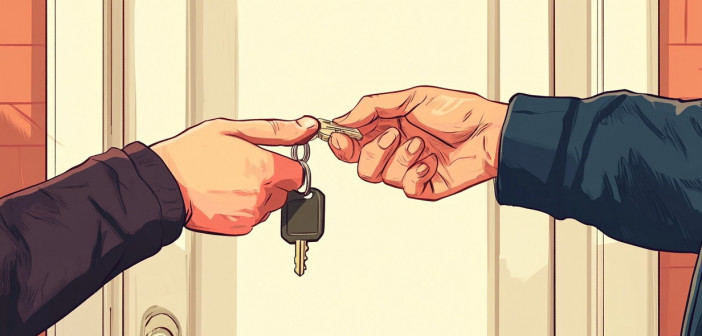Interest rates have fallen and mortgages are becoming more affordable. So is now a good time to buy a house – or should you hold off?
Buying a house or flat is a long, stressful and expensive process. It’s the biggest purchase that most people ever make – and once you’ve bought a property, it’s a decision that you’ll have to live with.
Exactly when is the right time to buy a house depends on your individual situation. But if you have some flexibility, here’s how to decide whether now is a good time to buy.
What is happening to house prices?
The average property price rose 4.6% over the year to December 2024, according to the latest data from the Office for National Statistics (ONS). It’s a promising sign for the year ahead, at least if you’re a home owner already or looking to sell.
This puts the average UK house price at £268,000 in February 2025 but, of course, that figure masks a wide variation in prices in towns and cities across the UK.
- In England, the average house price was £291,000 – up 4.3% from a year previously.
- In Wales, the average house price was £208,000 – up 3% from a year previously.
- In Scotland, the average house price was £189,000 – up 6.9% from a year previously.
To see average prices in your area, look at one of the leading property price data hubs from Nationwide or Halifax.
House prices are still rising, but some factors are keeping a lid on prices for now. They include:
Affordability is stretched
Most mortgages allow people to borrow four to five times their earnings. Property prices are already so high that affordability is stretched in parts of the country.
“People who are priced out of buying face sky high rents for life, while those who stretch themselves to get on to the property ladder can end up having to put other financial goals on hold, to focus on covering the cost of owning a home,” says Sarah Coles, head of personal finance at Hargreaves Lansdown, the investing platform.
Interest rates are higher
The Bank of England’s base rate is at 4.5% at the time of writing – and although this is down from the 15-year high of 5.25% in August 2024, it’s not far off. Lenders use the base rate as a guide for setting interest rates on mortgages, so the cost of borrowing to buy a home is historically high too.
Demand outstrips supply
In many areas – especially urban hotspots with plenty of jobs, and towns in commuting distance of bigger cities – there are more buyers than there are suitable homes.
People can still afford to buy homes
Low levels of unemployment and recent growth in wages is supporting property prices, as people are still able to borrow, according to Robert Gardner, chief economist at Nationwide.
Inherited wealth is also propping up house prices, as gifts and loans from parents and grandparents bridge the gap between what people can borrow and what they need to buy.
Older home-movers have built up equity or made money from their homes through the sharp rise in property prices over the past 20 years, which means they have sufficient wealth to buy.
What will happen to UK house prices in the next five years?
House prices depend on a number of factors including:
- Interest rates on mortgages
- Levels of unemployment
- Wage growth
- Supply and demand in specific areas
- Changes to stamp duty, a tax on property purchases
Without a crystal ball it’s impossible to say with certainty what will happen to house prices or the economy in the next five years.
Experts believe that property prices will be supported and rise gradually – although perhaps not at the steaming pace they have in the past.
Amanda Byrne, head of mortgages at Halifax, said: “Positive employment figures and anticipated decreases in interest rates are expected to continue supporting demand. This should underpin further house price growth, albeit at a modest pace as borrowing costs remain above the average of a few years ago.”
Gardner said: “Providing the economy continues to recover steadily, as we expect, the underlying pace of housing market activity is likely to continue to strengthen gradually as affordability constraints ease through a combination of modestly lower interest rates and earnings outpacing house price growth.”




